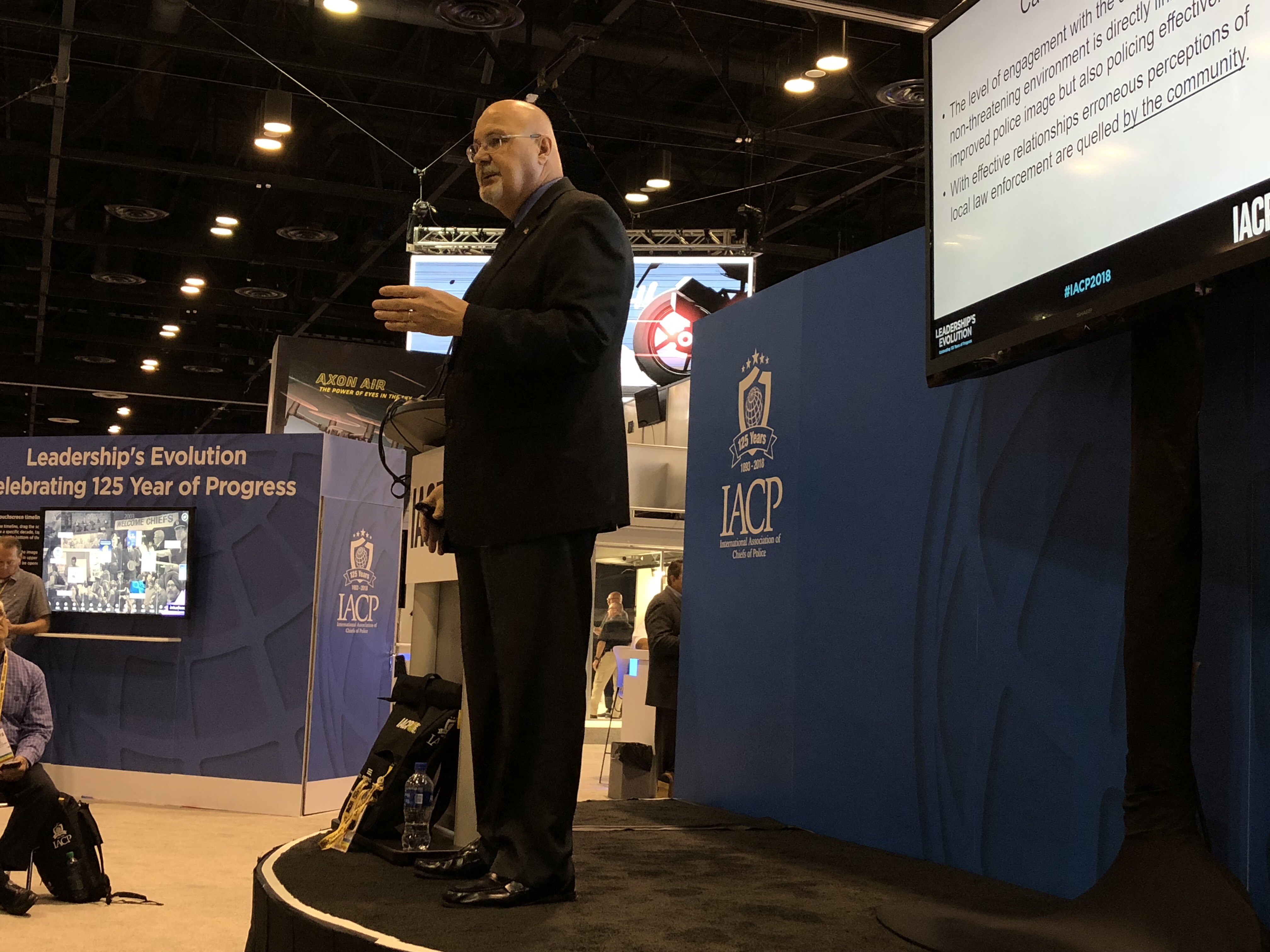Community Engaged Policing – IACP 2018 Panel

Community engaged policing is certainly not a new topic among law enforcement professionals. But as Richard Arrington, Crime Prevention Programs Manager, Virginia Department of Criminal Justice Services, noted during a standing room-only address during the IACP Conference today, evidence that demonstrates the effectiveness of these programs is another story.
Arrington began by exploring how the divide between law enforcement and the community came to be, and suffice to say, it’s an issue decades in the making. He explained that the advent of police radios in cars in the 1950s meant that police had an improved ability to get to areas of reported crimes faster. In effect, policing because more efficient, but it also meant that fewer cops were needed in the streets. The spread of television in the 1960s allowed the broader community to see the police in real-time, unfortunately including cases such as turning firehoses on anti-war and civil rights protestors. Jump ahead to the 1980s and 90s, and most law enforcement officers are patrolling by car, and are only seeing the community from behind the screen of their laptop on their dashboard.
Arrington’s candid suggestion: “We need to get out of the car.” He challenged attendees to consider that in order for law enforcement to properly serve the community, you must be part of the community. He added that by knowing the people in community, it will become clear that only a small number of citizens are, as he put it, “the bad seed.”
“Develop trusting relationships,” Arrington advised. “A lot of what we do is just public relations, or community relations.” These relationships will, in turn, lead to the prevention of crime. He also dispelled the notion that community engaged policing is tough on crime.
The process, he explained, begins with top-down training, transparency — including body cameras — meeting with the community, on-foot patrols, and most compelling, going into crime “hotspots” to conduct mass arrests. As Arrington noted, “the community is afraid” of these areas, and it important to show them that the police are there to fix the issue.
After the implementation of this program in Martinsville, Va. in 2013, overall crime dropped 23 percent and violent crime dropped 15 percent in one year. By 2016, violent crime dropped 50 percent and property crime — which is a very time-consuming offense for police — dropped 26 percent.
In a moment of modesty, Arrington explained, “I teach common sense.” But in spite of increasing crime statistics, and violent incidents, like the riots in Charlottesville, Va., Arrington remains firm on the success of the community policing model.
“The problem is when we don’t fix our own problems,” he concluded.